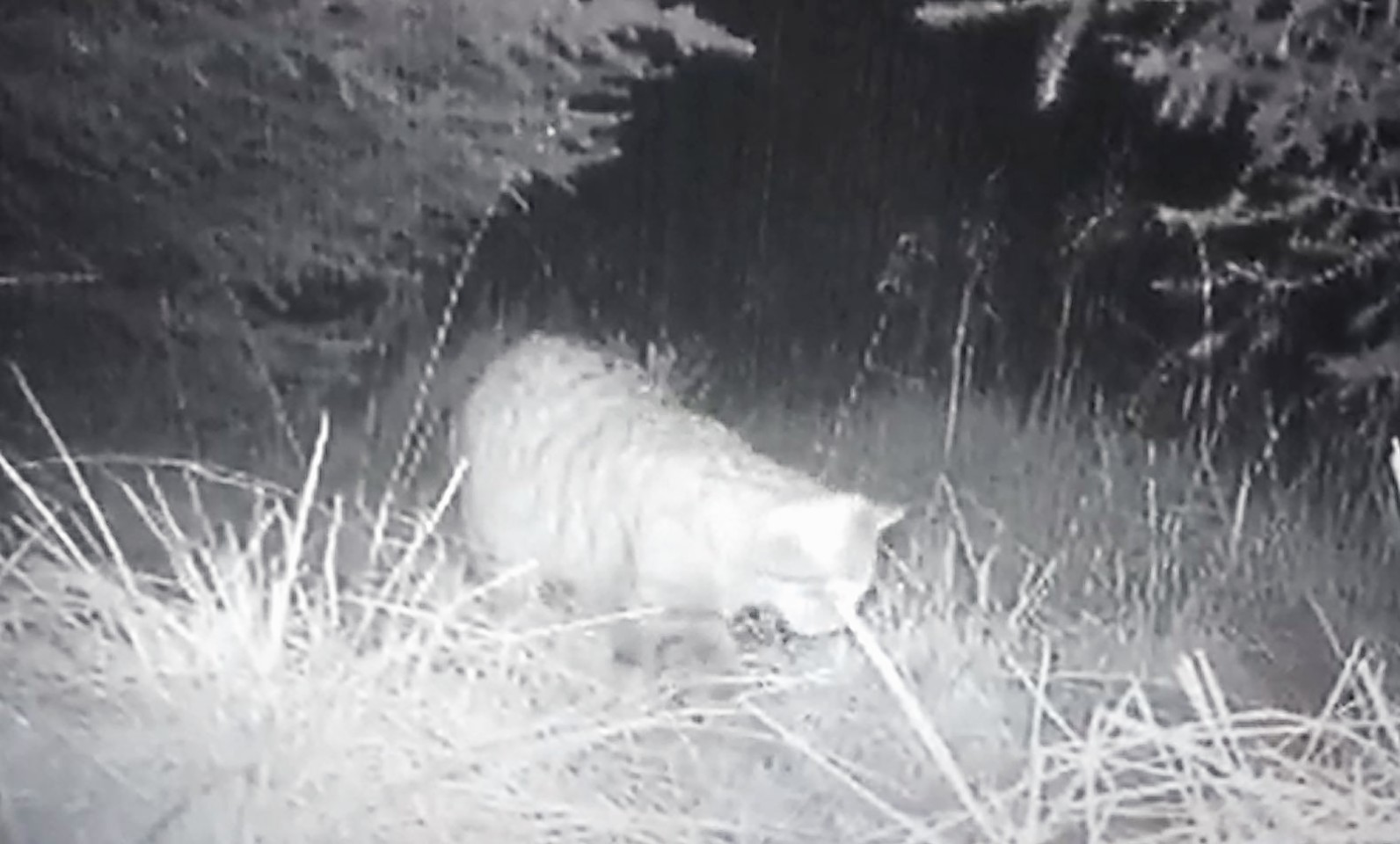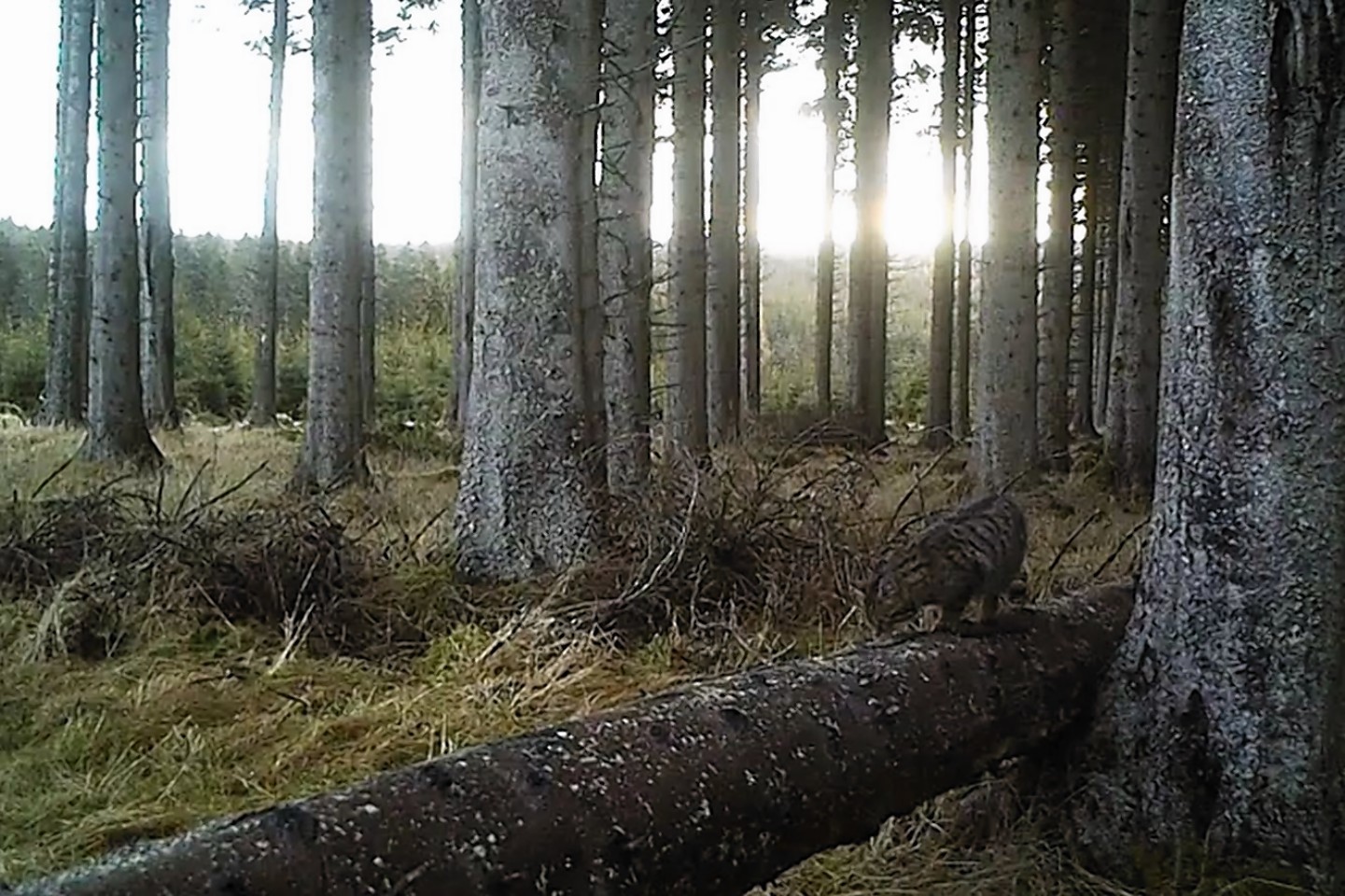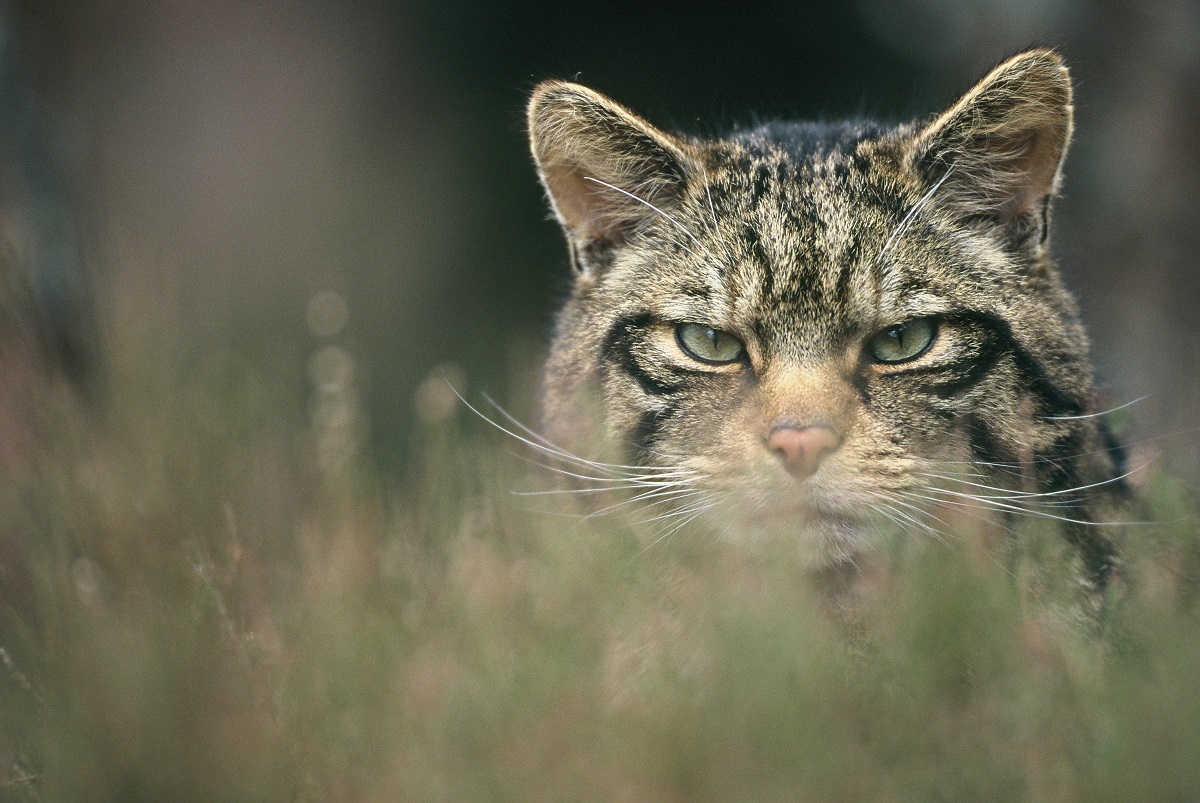One of the last strongholds of Scottish wildcats has been discovered in the north-east by a group of conservationists fighting tooth and nail to save the species.
And now Wildcat Haven is planning to expand its ground-breaking project into Aberdeenshire in order to reverse the decline of the iconic predator.
A bastion of the animals has been unearthed between Rhynie and Dufftown, and about six of the creatures, including a kitten, was spotted by a local wildlife lover.
Wildcat Haven is determined to increase the work it carries out to save the species, and their endeavours were trialled to huge success in Ardnamurchan on the West Coast.
Footage and images caught by Wildcat Haven project officer, Kevin Bell, have shown the wild animals stalking a woodland – though, for the protection of the animals, the exact details cannot be revealed.
The group has successfully established an area of land in Ardnamurchan and Morven for the animals to thrive.
Its staff are committed to keeping the wildcats themselves truly wild, and have maintained the species’ main threat is “hybridisation” with feral and domestic cats.
Last night, their director, Emily O’Donoghue, said the find could represent a “significant proportion” of the wildcats remaining in Scotland.
She added they were “excited” at the prospect of expanding into the north-east of Scotland as they look to conduct further studies into the find.
The discovery in Aberdeenshire took nearly two years to be confirmed, and Mrs O’Donoghue said she was “amazed” at what was unearthed in the process.
She stated: “We were contacted by some local residents in Aberdeenshire about 18 months ago who suspected that there may be some wildcats. Although we do focus on the West Coast, we do survey work all over Scotland.
“So, 18 months ago, people said to us they thought there were wildcats here and we wanted to verify that. We provided some camera traps to start doing some survey work and we were incredibly pleased by what we found, we were actually amazed.
“Excitingly we have found at least six different wildcats and this has been done with very limited resources. There may be more in the area and this already represented a fairly significant percentage of the remaining wildcat population left in Scotland.
“It is not easy to find these cats, our worker has been trekking miles and miles in very harsh terrain.
“We want to carry out a further assessment. This certainly has the potential to be a stronghold area for the Scottish wildcat.
“When you think of population estimates of way less than 100, even five to six individuals is a very significant find.”
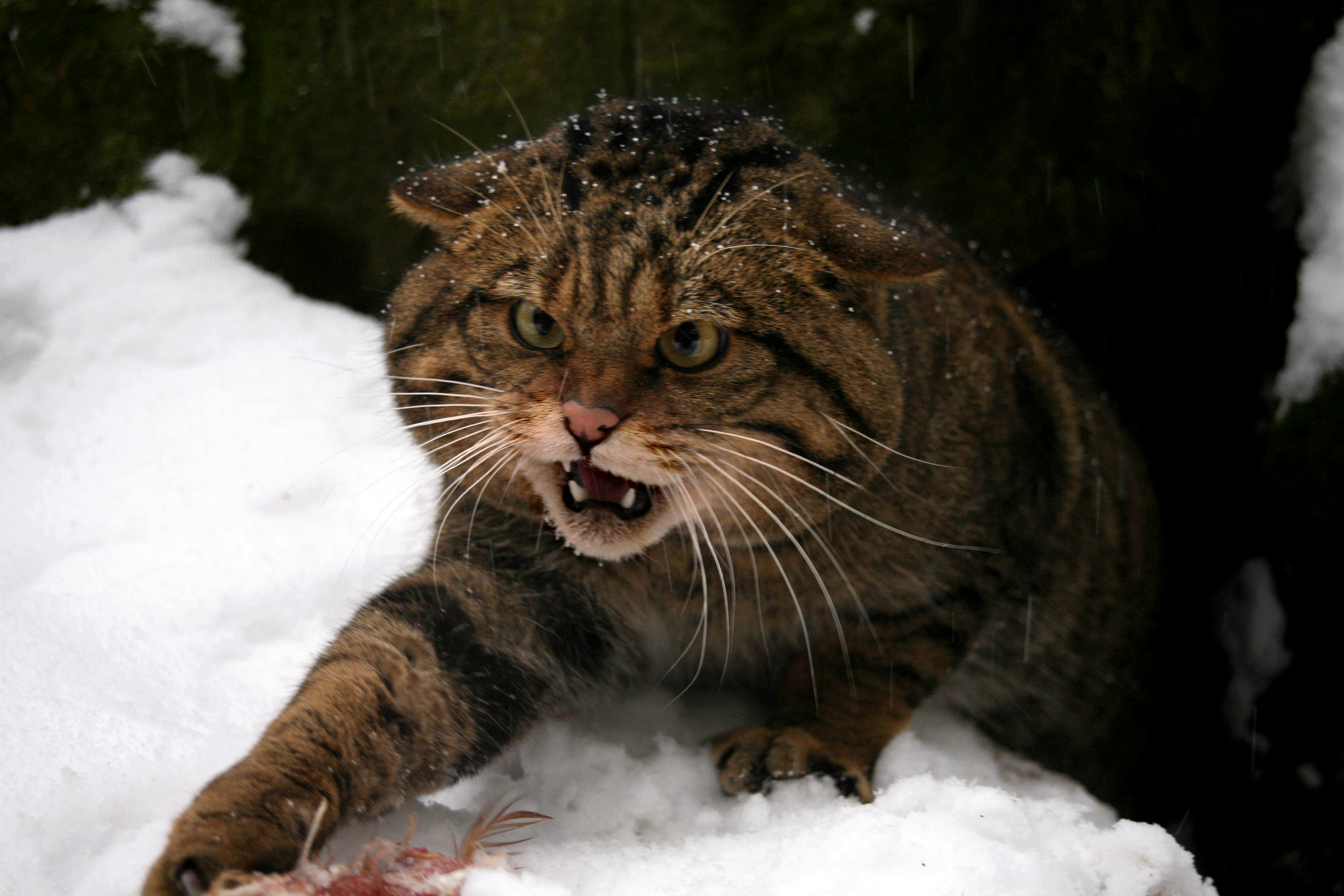
The Wildcat Haven field conservation project, the first of its kind, involves preserving the creatures in the natural wilds of Scotland.
The charity achieves that through neutering all feral or domestic cats within a given radius of the wildcat’s home in the outdoors.
The Scottish wildcat is critically endangered, with numbers of the animals in the wild said to be fewer then 100.
They are dying out as a consequence of loss of habitat, interbreeding with feral and domestic cats and feline diseases.
Mrs O’Donoghue added: “Wildcat Haven believes the wildcat should and must be conserved in the wild where it belongs.
“We don’t believe that wildcats should be caught and put into zoos. We are strongly against that and are actively campaigning against it.
“Wildcat Haven has shown that the wildcat can be protected in the wild and that is where it should be. It is called the Scottish wildcat, not the Scottish zoo cat.”
The organisation’s next steps will be a community engagement and monitoring programme.
Last night the Wildcat Haven Aberdeenshire project officer said it was “exciting” times.
Kevin Bell, 29, lives near Rhynie and has spent the best part of three years trying to put truth to the myth there were wildcats living nearby.
The former oil and gas worker added: “I have been doing it for three years and I have only ever seen very, very few, but now I know they do exist in Aberdeenshire.
“These cats are really good, their markings are perfect. I am going out every weekend and putting cameras out, it has taken over two years to find where these cats are.
“Recently I spotted a wildcat kitten. Seeing any wildcat is amazing but seeing a kitten is one of the most beautiful sights I have ever seen.”
We need the north-east community on-board, says charity
Wildcat Haven said they need the north-east community “on board with them” as they look to expand the work they have done on the West Coast.
Its plans would mean feral and domestic cats in the vicinity of the Aberdeenshire wildcats being neutered.
However, Wildcat Haven operates a “no cull” policy and is dedicated to a “trap-neuter-release” programme.
Mrs O’Donoghue said Aberdeenshire may bring fresh challenges for the project to overcome.
She added: “The key thing we need is community support. We need the community to tell us where the feral cats are, who has got a pet cat that isn’t neutered and if they have seen any wildcats or hybrids.
“It is a grassroots project, it embeds itself in the local community and it does so extremely well.
“We want to build up a database of all the cats in Aberdeenshire and then we can start to put in place management protocols to ensure the survival of the wildcat.
“This is what we enjoy most about project. The community buy in is fantastic. We offer vet care where there aren’t any vets. We offering neutering and free microchip services.
“We go into all the local schools and speak to all the local children. We work with landowners, foresters and with local biologists.
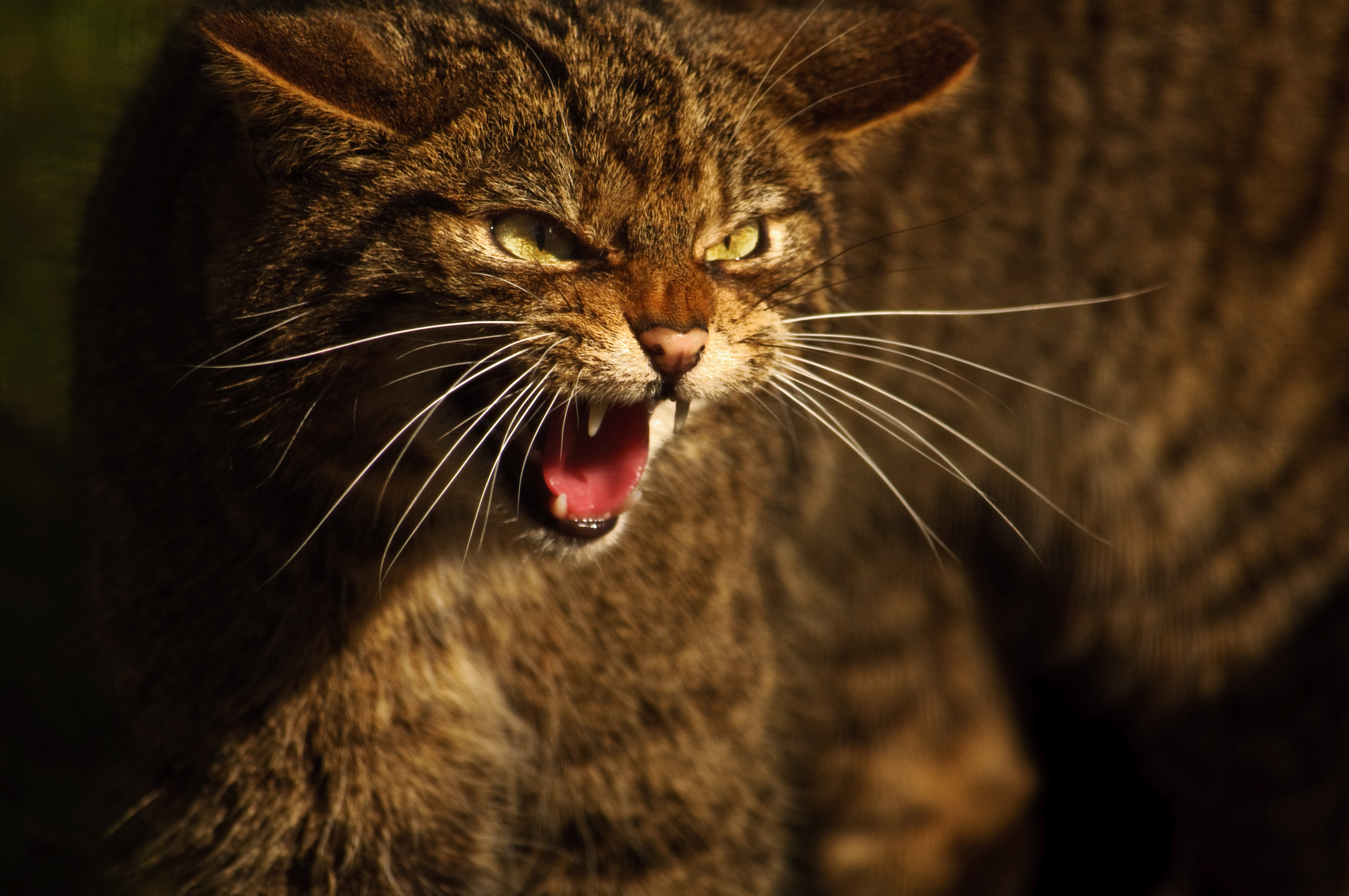
Project hailed a success on West Coast
Last month Wildcat Haven hailed the project a success on its West Coast base of operations.
No new feral or domestic cats had been reported at any of its west Lochaber monitoring sites for four months.
The group said this showed its methods for protecting the Scottish wildcat from extinction are working, and the project itself should be used as a blueprint to save the species.
Wildcat Haven was set up by a team of ecologists, wildlife experts, vets, teachers and landowners in 2008 to save the animal.
Since establishing themselves on the West Coast they have extended the haven area to 800 square miles.
This means the field conservation scheme is now covering Ardnamurchan, Sunart, Morvern and Moidart.
Last night director of Wildcat Haven, Emily O’Donoghue, said: “We find where the wildcats are and operate a very comprehensive neutering programme to neuter every feral and domestic cat in the area.
“So in Ardnamurchan we have neutered every single feral and domestic cat over an 800 square mile domestic area. This is the only area in Scotland now where wildcats can breed with other wildcats without the risk of hybridisation. We can apply similar techniques to Aberdeenshire.”
